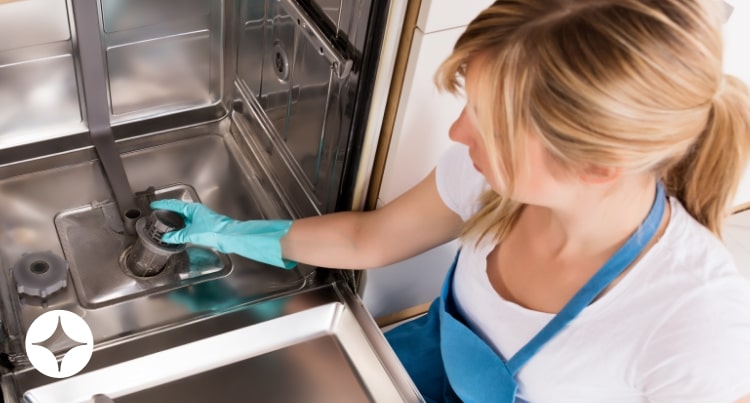
Living in a clean and tidy home has many benefits for all-round well-being. Regular cleaning reduces potential allergens and irritants, such as pet dander[1], dust and mold[2], and prevents harmful pests[3] from moving in. Additionally, household organization lowers the risk of accidents in the home. A clean and clutter-free living environment can help to reduce stress[4] and promote a sense of calm, while the very act of cleaning can boost physical[5] and mental[6] health.
However, even the most houseproud individuals can easily overlook cleaning certain items, inadvertently allowing germs[7] and unpleasant smells to build. Bacteria can quickly grow on a range of surfaces[8] and spread in many ways, including contact with people and pets and drips and spills. Additionally, some viruses[9] can live on surfaces around the home for a significant period. This article looks at some of the most common household items that many people forget to clean.
Items to Add to Cleaning Routines
Bacteria can lurk in surprising places. Don't forget to regularly clean the following six items for a healthier home:
Shower Curtains: The moist, warm conditions in a bathroom can be ideal for bacteria and mold growth, with the shower curtain[10] a particular hotspot. Soap scum[11] typically contains various germs, some of which could be harmful. Experts recommend cleaning the shower curtain[12] in the washing machine every 1–3 months.
Trash Cans: Leaks and spills from food waste, discarded cleaning cloths, packages and similar can encourage germ[13] growth in just a couple of days. Dirty trash cans can also attract ants, flies and other pests as well as smell bad. It's important to thoroughly clean garbage cans[14] at least once a month, in addition to daily emptying.
Dishwashers: Research indicates that more than 70 types of bacteria[15] can inhabit a dishwasher. Contrary to popular belief, dishwashers don't fully clean themselves. Gently scrubbing the filter and wiping down the inside and outside with hot soapy water can improve dishwasher hygiene.
Refrigerators: It's easy to overlook small spills and crumbs in the refrigerator, wiping down only areas that are noticeably dirty. Despite the cool conditions, bacteria can still thrive inside the fridge[16], not to mention the outer surface and high-touch handles. Wipe outside the fridge every few days and deep clean[17] inside every few months.
Sleep Equipment: Although sleep equipment users generally understand the importance of daily cleaning[18] for various parts of sleep therapy equipment, many forget to periodically wipe down the actual machine.
Humidifiers: Although humidifiers[19] have many benefits, regular cleaning is essential to prevent bacteria and mold build-up. Experts recommend cleaning the tank weekly[20] with a mild bleach solution in addition to daily emptying and drying.
High-Touch Items to Regularly Clean
People come into contact with certain household items more than others, creating high-touch surfaces[21] where both bacteria and viruses can linger. Pay attention to the following items when doing the housework:
- Light switches[22]
- Door handles
- Phones[23]
- Keyboards
- Remote controls
- Car steering wheel
- Keys
- Spectacles
- Credit and debit cards
The CDC recommends[24] cleaning high-touch items regularly, especially if visitors have been in the home. Cleaning wipes or a damp, soapy cloth can make this task quick and easy.
Create a healthier home and add the above items to the household cleaning schedule.
References
- American Lung Association - Pet Dander
- Asthma and Allergy Foundation of America - Mold Allergy
- EPA.gov - Public Health Issues Caused by Pests
- National Library of Medicine - Interactions of top-down and bottom-up mechanisms in human visual cortex
- Indiana University - Tidier homes, fitter bodies?
- Forbes Health - The Mental Health Benefits Of A Clean Home
- National Geographic - What to Know About the Germs in Your Home
- CDC.gov - Germs Live in the Environment
- Cleveland Clinic - Virus
- Healthline - Forget the Toilet Seat — Shower Curtains Have Most Germs in Your Bathroom
- National Library of Medicine - Molecular Analysis of Shower Curtain Biofilm Microbes
- HouseDigest - How Often Should You Really Be Cleaning Your Shower Curtain?
- SoClean SleepTalk Blog - 8 Germ Facts You Need to Know
- HouseDigest - Here's How Often You Need To Clean Your Garbage Can
- USDA - Can bacteria grow in the refrigerator?
- WebMD - How to Clean Your Dishwasher
- Today - How to clean the refrigerator — and how often to do it
- National Council on Aging - How To Clean a CPAP Machine
- SoClean SleepTalk Blog - Humidifier vs. Air Purifier—What’s the Difference?
- WebMD - Humidifiers: How to Use and Maintain Them
- National Library of Medicine - High-touch surfaces: microbial neighbours at hand
- Martha Stewart - How to Clean Your Light Switches
- SoClean SleepTalk Blog - How to Disinfect Your Smartphone—and Why You Should
- CDC.gov - When and How to Clean and Disinfect Your Home




